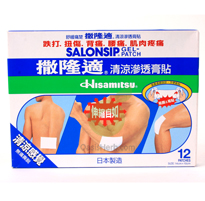Cancer anorexia-cachexia syndrome (CACS) is an extremely common condition in cancer patients. It is estimated that 50% of cancer patients suffered from anorexia. The exact frequency of CACS varies according to the primary pathology (from 30% in patients with lymphoma to 85% inpatients with gastric or pancreatic cancer) and the stage of disease (from 3% in patients receiving adjuvant chemotherapy to 75%-80% in terminal-stage patient populations).
Anorexia and cachexia are important because malnutrition and wasting in cancer patients have long been recognized as being predictive of poor outcome. Significant weight loss at the time of diagnosis was correlated with decreased survival, reduced quality of life and impaired response to chemotherapeutic intervention. For example, an analysis of patients with metastatic breast cancer has found that patients with any degree of weight loss had a median survival that was less than two thirds that of patients who did not have weight loss.
Cachexia in AIDS
Anorexia, however, is not limited to cancer patients. Involuntary weight loss, or wasting indicative of severe protein energy malnutrition is also a frequent complication of acquired immune deficiency syndrome (AIDS). Malnutrition, with its associated adverse effects on immunocompetence, may contribute to the progression of AIDS itself.
The severity and progression of weight loss in patients with AIDS varies with the course of the disease. Typically, weight loss occurs early in the course of human immune deficiency virus (HIV) infection and increases in severity with progression of the disease. Furthermore, wasting in HIV involves mainly the loss of lean body mass with a paradoxical preservation of body fat.
Causes and treatments
The mechanism of weight loss in AIDS and cancer has not been fully elucidated.
The etiology, however, is likely to be multifactorial:
-Decreased caloric intake due to depression, side effect of treatment medication, or gastrointestinal obstruction/dysfunction
-Malabsorption
-Alterations in energy expenditure secondary to hormonal and/or metabolic abnormalities (e.g. secretion of cytokines).
Some investigators have suggested the use of enteral and parenteral nutrition. However, these therapeutic options are expensive, cumbersome, and potentially causing more morbidity.
Several agents, including corticosteroids, cannabinoids, cyproheptadine, hydrazine sulfate, anabolic steroids, pentoxifylline, thalidomide and ondansetron, have been investigated in the past. With the exception of megestrol acetate, oxandrolone and dronabinol, most of these drugs did not demonstrate significant long-term benefit in patients with anorexia or cachexia. Also, there is no clinical evidence suggesting that taking orexigenic can increase patients’ survival rates.
Category Analysis
The number of cancer and AIDS patients experiencing anorexia/cachexia was small, but increasing. Megace® oral suspension is the leader in this category.
| Tablet 1. Selected product comparison of the Anorexia/Cachexia category | ||||
| Megesterol (Par) | Megace® | Oxandrin® | Marinol® | |
| Classification | None | None | Schedule C-III | Schedule C-III |
| Efficacy | +++ | +++ | +++ | ++ |
| Side-effectDyslipidemiaHepatotoxicityHallucinationPalpitation | + | + | +++ | ++ |
| Dosage | QID | QID | OD-BID | BID-QID |
| Liquid and oral formulation | Yes | Yes | No | No |
+++ – Strong
++ – Moderate
+ – Low
Megace®
Bristol Myers Squibb initially developed Megace® (megestrol acetate) as a synthetic, orally active progestational agent for the treatment of breast, renal cell, or endometrial carcinoma. The orexigenic property of megestrol was first noted when it stimulated appetite and weight gain in breast, endometrial, and prostate cancer patients. Since then, megestrol is also used as an orexigenic agent for patients with anorexia or cachexia.
The drug is currently available in tablets and oral suspension form. Due to its ease of administration, oral formulation is usually prescribed to patients with anorexia or cachexia.
Even though megestrol acetate does not help all patients with anorexia, it is the most extensively studied agent for anorexia and cachexia. At some institution, it has even become standard therapy for treating cancer-associated anorexia.
Over the past years, numerous studies have demonstrated the efficacy of megestrol on improving appetite, food intake, weight gain and improvement in quality of life in patients with advanced malignancies and in patients with AIDS.
These weight gains are due not to water retention, but to an increase in total body fat and to some extent, increased lean body mass. A recent study conducted by Von Roemn has found that a significant number of patients treated with 800mg megestrol acetate had weight gain of a least 5lb. Also, there is a strong correlation between the dosage and the amount of weight gained on the patients. Patients who take higher doses of megestrol acetate (e.g. 800mg/d vs. 160mg) are usually associated with bigger weight increase.
Besides an improvement on appetite and food intake, patients who took megestrol acetate also experienced significantly less nauseas and vomiting. This effect is considered an additional benefit since most cancer patients taking antineoplastic drugs experience nausea and vomiting.
When compared with other anorectic agents, megestrol is more effective than Marinol® in stimulating appetite and improving weight gain. In a recent study, a greater percentage of megestrol acetate-treated patients reported appetite improvement and weight gain compared with Marinol®-treated patients: 75% versus 49% (P=.0001) for appetite and 11% versus 3% (P=.02) for greater or equal to 10% baseline weight gain. The Functional Assessment of Anorexia/Cachexia Therapy questionnaire, which emphasizes anorexia-related questions, also demonstrated an improvement in quality of life (QOL) among megestrol acetate-treated patients.
Also, unlike its competitors, mesgestrol does not have access issue associated with other anorectic agents. While Marinol® and Oxandrin® are both schedule C-III controlled substances, prescription of megestrol are not restricted by any laws or regulations.
The recommended starting dose of megestrol is 320 mg/day for anorexia and cachexia. The dose should be increased every 4 weeks up to a maximum of 800mg/d. Appetite and food intake should increase rapidly, usually in a matter of hours or days. Once a comfortable level of appetite, food intake, and weight is achieved, the dose can be decreased to 160mg per day for maintenance. Doses beyond 800mg/day are not recommended since efficacy does not seem to increase further, but toxicity may be higher.
Side effects associated with megestrol are rare. The most commonly experienced side effects are mild edema and hypoglycemia. It is important to note that patients with a history of thromboembolic events or who are bed-bound should avoid taking this drug.
Oxandrin®
Oxandrin® is an orally administered synthetic testosterone-derivative approved by the FDA in July 1964. In combination with adequate calories, Oxandrin® is useful for promoting weight gain after burns or trauma and in certain disease states, such as COPD and AIDS.
Unlike megestrol acetate, the increase in weight is primarily a result of enhanced lean body mass as compared to enhanced body fat. The beneficial effects on lean body mass, however, are lost with drug discontinuance. Side effects of Oxandrin® include dyslipidemia and potential hepatotoxicity.
In 1991, Oxandrin® became a schedule C-III controlled substance and is usually reserved for patients who have profound cachexia.
Marinol®
Marinol® is a synthetic oral preparation of delta-9-tetrahydrocannabinol (delta-9-THC), one of 66 active compounds, called cannabinoids, found in Cannabis sativa L (marijauna). When Unimed first launched it in 1985, Marinol® was indicated for the relief of nausea and vomiting secondary to cancer chemotherapy in patients who have failed to respond to other antiemetics. In the last ten years, this product has also been used as an appetite stimulant in cancer and AIDS patients.
Like Oxandrin®, Marinol® is also a schedule III controlled substance. Marinol® should be given as a low dose (2.5mg) in the evening. The dose should be increased to 5mg per day if no improvement in appetite is seen after 2 to 4 weeks.
Serious adverse events associated with Marinol® include confusion, anxiety, palpitation, abdominal pain, asthenia and hallucination. Since the gelatin capsules of Marinol® are formulated with sesame oil, patients with hypersensitivity to sesame oil should avoid taking this drug.
Periactin®
Periactin® (cyprohetadine) is a piperidine H1-antagonist developed by Merck in 1982. Currently, Periactin® is seldomly used to treat anorexia in cancer patients, but is used mainly for allergic reaction such as pruritus, urticaria and allergic rhinitis. .
Please visit healthreason.com for more health related articles.







2 Responses to Anorexia and Cachexia – Causes, Symptoms, Diagnosis, Prognosis and Latest Treatment